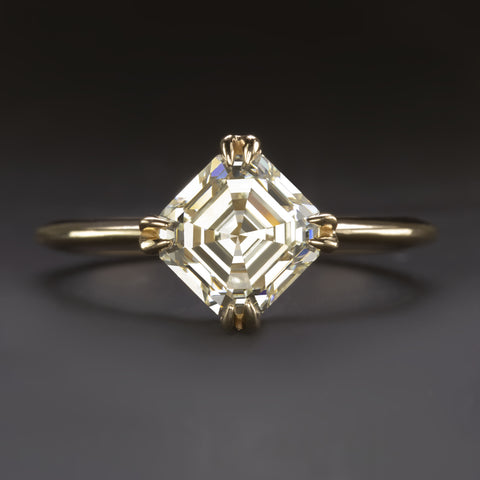Demystifying Jewelry Terms: Common Ring Styles
-
Solitaire: A classic ring style featuring a single center stone. It is often, but not always is set in a simple setting with a plain shank.

-
Halo: A ring style where a central gemstone is surrounded by a circle or "halo" of smaller accent stones, typically diamonds, enhancing the overall sparkle and visual impact.

-
Three-Stone: Also known as a trilogy ring, this style features three gemstones of similar or varying sizes set side by side, symbolizing the past, present, and future.

-
Pave: A ring style with tiny diamonds or other gemstones set closely together, creating the appearance of a "paved" surface of shimmering stones.

-
Eternity: A ring style featuring a continuous band of identical gemstones, usually diamonds, encircling the entire ring. It symbolizes eternal love and commitment.

-
Channel: A ring style where gemstones, typically diamonds, are set between two metal channels, creating a sleek and streamlined look.

-
Cluster: A ring style where multiple smaller gemstones are grouped together to create the appearance of a larger central stone. This design offers a dazzling and intricate look.

-
Bezel: A ring style where the gemstone is surrounded by a metal rim or bezel, securely holding it in place and offering protection.

-
Split Shank: A ring style where the band splits into two or more strands as it reaches the center stone, creating an open and distinctive design.

-
Filigree: A ring style featuring intricate metalwork, often in a lacy or scroll-like pattern, adding a delicate and vintage-inspired touch to the design.

-
Signet: A ring style with a flat or slightly domed top, typically engraved with a personalized monogram, crest, or symbol, representing identity or family heritage.

-
Bypass: A ring style where the band splits and curves around the center stone, creating an asymmetrical and contemporary design.

-
Infinity: A ring style with a twisted or intertwined band, forming the symbol of infinity (∞), representing everlasting love and connection.

Recent posts
Why Diamonds Are a Smart Investment
While traditional investment options like stocks, bonds, and real estate fluctuate with market trends, diamonds hold a distinct position as a tangible, portable, and enduring store of wealth.
The Smart Investment: Rising Gold Prices vs. Platinum Value
Gold has long been a symbol of luxury, but its soaring prices have changed the jewelry market landscape. With gold costs on the rise, the price difference between gold and platinum is shrinking. This shift means that for only a slightly higher investment you can enjoy the many advantages that platinum offers over gold.
Zendaya’s Engagement Ring: A Modern Twist on the Button Back Setting
Zendaya’s engagement ring, unveiled at the 2025 Golden Globes, has quickly become the talk of the town, blending timeless vintage charm with a contemporary twist. Designed by London-based jeweler Jessica McCormack, the ring features a stunning 5.02-carat cushion-cut diamond set in a unique east-west orientation. But what truly sets this piece apart is its vintage-inspired "button back" setting, which has roots dating back to the Georgian era.















